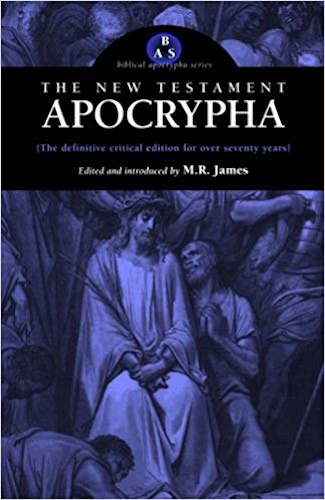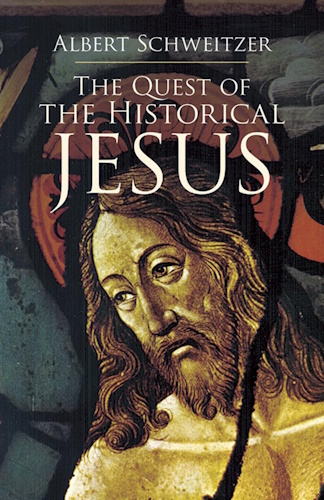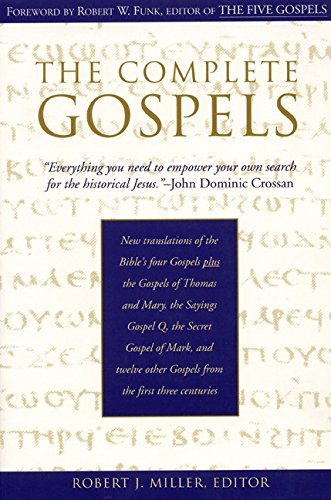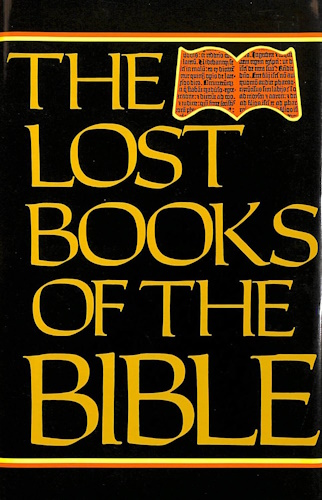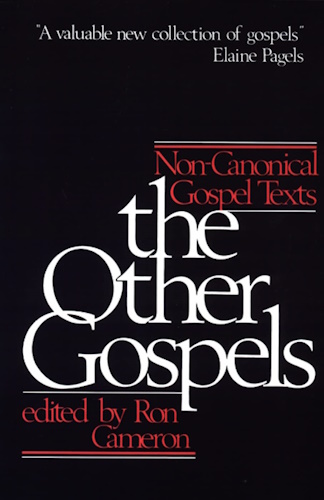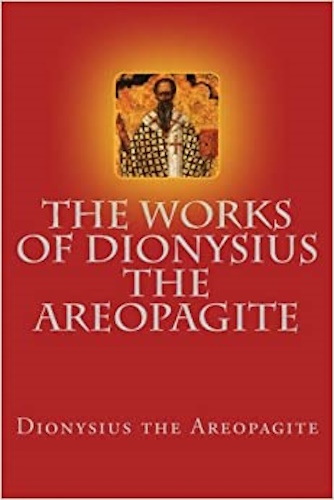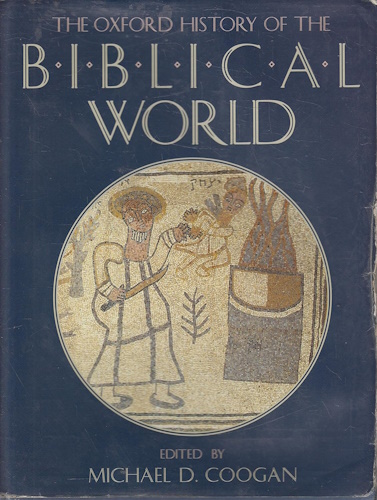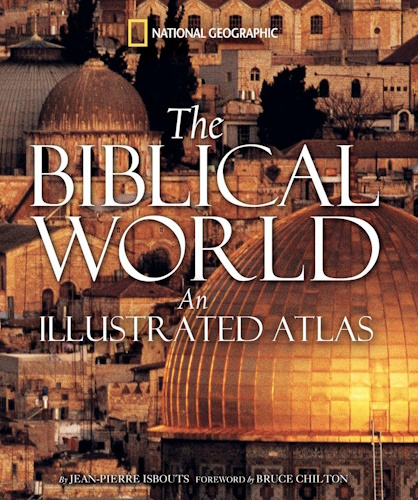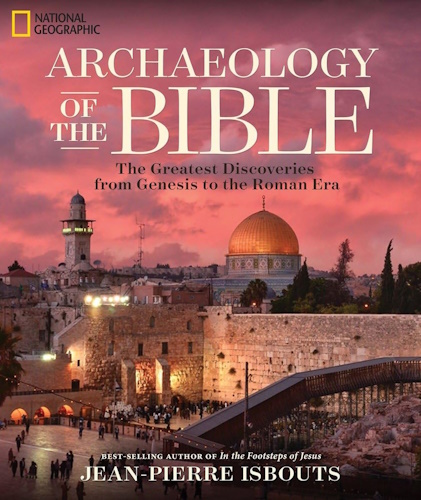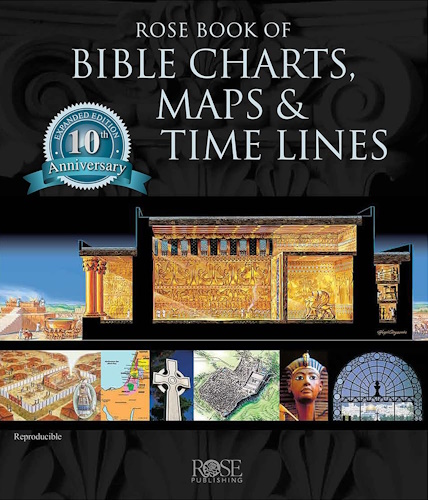
The works of Dionysius the Areopagite
Ecclesiastical Hierarchy
Caput II
I. Concerning things done in Illumination.
We have, then, reverently affirmed that this is the purpose of our Hierarchy, viz., our assimilation and union with God, as far as attainable. And, as the Divine Oracles teach, we shall attain this only by the love and the religious performance of the most worshipful Commandments. For He says: "He229 that loveth Me will keep My Word, and My Father will love him, and we will come unto him, and will make Our abode with him." What, then, is source of the religious performance of the most august commandments? Our preparation for the restitution of the supercelestial rest, which forms the habits of our souls into an aptitude for the reception of the other sacred sayings and doings230, the transmission of our holy and most divine regeneration231. For, as our illustrious Leader used
page 75
to say, the very first movement of the mind towards Divine things is the willing reception of Almighty God, but the very earliest step of the religious reception towards the religious performance of the Divine commandments is the unutterable operation of our being from God. For if our232 being from God is the Divine engendering, never would he know, and certainly never perform, any of the Divine instructions, who had not had his beginning to be in God. To speak after the manner of men, must we not first begin to be, and then to do, our affairs? Since he, who does not exist at all, has neither movement nor even beginning; since he, who in some way exists, alone does, or suffers, those things suitable to his own nature. This, then, as I think, is clear. Let us next contemplate the Divine symbols of the birth in God. And I pray, let no uninitiated person approach the sight233; for neither is it without danger to gaze upon the glorious rays of the sun with weak eyes, nor is it without peril to put our hand to things above us. For right was the priesthood of the Law, when rejecting Osias, because he put his hand to sacred things; and Korah, because to things sacred above his capacity; and Nadab and Abihu, because they treated things, within their own province, unholily.
II. Mysterion of Illumination.
Section I.
The Hierarch, then, wishing that all men whatsoever should be saved by their assimilation towards God, and come to recognition of truth, proclaims to all the veritable Good News, that God being compassionate towards those upon earth, out of His own proper and innate goodness, deigned Himself to come to us with outstretched arms, by reason of loving-kindness towards men; and, by the union with Him, to assimilate, like as by fire, things that have been made one, in proportion to their aptitude for deification. "For as many as received Him, to them gave He power to become children of God—to those who believe on His Name, who were begotten, not of bloods, nor of will of flesh, but of God234."
Section II.
He, who has felt a religious longing to participate in these truly supermundane gifts, comes to some one of the initiated, and persuades him to act as his conductor to the Hierarch. He then professes wholly to follow the teaching that shall be given to him, and prays him to undertake the superintendence of his introduction, and of all his after life. Now he, though religiously longing for his salvation, when he measures human infirmity against the loftiness of the undertaking, is suddenly seized
page 77
with a shivering and sense of incapacity, nevertheless, at last, he agrees, with a good grace, to do what is requested, and takes and leads him to the chief Hierarch.
Section III.
He, then, when with joy he has received, as the sheep upon his shoulders, the two men, and has first worshipped, glorifies with a mental thanksgiving and bodily prostration the One beneficent Source, from Which, those who are being called, are called, and those who are being saved, are saved.
Section IV.
Then collecting a full religious assembly into the sacred place, for co-operation, and common rejoicing over the man's salvation, and for thanksgiving for the Divine Goodness, he first chants a certain hymn, found in the Oracles, accompanied by the whole body of the Church; and after this, when he has kissed the holy table, he advances to the man before him, and demands of him, what has brought him here?
Section V.
When the man, out of love to God, has confessed, according to the instruction of his sponsor, his ungodliness, his ignorance of the really beautiful, his insufficiency for the life in God, and prays, through his holy mediation, to attain to God and Divine things, he (the Hierarch) testifies to him, that his approach ought to be entire, as to God Who is All Perfect, and without
page 78
blemish; and when he has expounded to him fully the godly course of life, and has demanded of him, if he would thus live,—after his promise he places his right hand upon his head, and when he has sealed him, commands the priests to register the man and his sponsor.
Section VI.
When these have enrolled the names, he makes a holy prayer, and when the whole Church have completed this with him, he looses his sandals, and removes his clothing, through the Leitourgoi. Then, when he has placed him facing the west and beating his hands, averted towards the same quarter, he commands him thrice to breathe scorn upon Satan, and further, to profess the words of the renunciation. When he has witnessed his threefold renunciation, he turns him back to the east, after he has professed this thrice; and when he has looked up to heaven, and extended his hands thitherward, he commands him to be enrolled under Christ, and all the Divinely transmitted Oracles of God. When the man has done this, he attests again for him his threefold profession, and again, when he has thrice professed, after prayer, he gives thanks, and lays his hand upon him.
Section VII.
When the Deacons have entirely unclothed him, the Priests bring the holy oil of the anointing. Then he begins the anointing, through the threefold sealing, and for the rest assigns the man to the Priests, for the anointing of his whole body, while himself
page 79
advances to the mother of filial adoption, and when he has purified the water within it by the holy invocations, and perfected it by three cruciform effusions of the altogether most pure Muron235, and by the same number of injections of the all holy Muron, and has invoked the sacred melody of the inspiration of the God-rapt Prophets, he orders the man to be brought forward; and when one of the Priests, from the register, has announced him236 and his surety, he is conducted by the Priests near the water to the hand of the Hierarch, being led by the hand to him. Then the Hierarch, standing above, when the Priests have again called aloud near the Hierarch within the water the name of the initiated, the Hierarch dips him three times, invoking the threefold Subsistence of the Divine Blessedness, at the three immersions and emersions of the initiated. The Priests then take him, and entrust him to the Sponsor and guide of his introduction; and when they, in conjunction with him, have cast over the initiated appropriate clothing, they lead him again to the Hierarch, who, when he has sealed the man with the most Divinely operating Muron, pronounces him to be henceforward partaker of the most Divinely initiating Eucharist.
Section VIII.
When he has finished these things, he elevates himself from his progression to things secondary, to the contemplation of things237 first, as one, who, at no time or manner, turns himself to any other thing whatever than those which are peculiarly his own, but from things Divine to Divine,—is persistently and always ranging himself under the banner of the supremely Divine Spirit.
III. Contemplation.
Section I.
This initiation, then, of the holy birth in God, as in symbols, has nothing unbecoming or irreverent, nor anything of the sensible images, but (contains) enigmas of a contemplation worthy of God, likened to physical and human images. For how should it appear misleading? Even when the very divine meaning of the things done is passed over in silence,238 the divine Instruction might convince, religiously pursuing as it does the good life of the candidate, enjoining upon him the purification from every kind of evil, through a virtuous and Divine life, by the physical cleansing through the agency of water in a bodily form. This symbolic teaching then of the things done, even if it had nothing more divine, would not be without religious value, as I think, introducing a discipline of a well-regulated life, and. suggesting mysteriously, through the total bodily
page 81
purification by water, the complete purification from the evil life.
Section II.
Let this, then, be, for the uninitiated, a conducting guidance of the soul, which separates, as is meet things sacred and uniform from multiplicity, and apportions the harmonious elevation to the Orders severally in turn. But we, who have ascended by sacred gradations to the sources of the things performed, and have been religiously taught these (sources), shall recognize of what moulds they are the reliefs, and of what invisible things they are the likenesses. For, as is distinctly shewn in the Treatise concerning "Intelligible and Sensible," sacred things in sensible forms are copies of things intelligible, to which they lead and shew the way; and things intelligible are source and science of things hierarchical cognizable by the senses.
Section III.
Let us affirm, then, that the goodness of the Divine Blessedness is always in the same condition and manner, unfolding the beneficent rays of its own light upon all the intellectual visions without grudging. Should, then, the self-choosing self-sufficiency of the contemplators either turn away from the light contemplated, by closing, through love of evil, the faculties for enlightenment naturally implanted within it, it would be separated from the light present to
page 82
it, not turned away, but shining upon it when shortsighted and turning its face from light generously running to it; or should it overstep the bounds of the visible given to it in due proportion, and rashly undertake to gaze upon the rays superior to its vision, the light indeed will do nothing beyond its proper functions, but it, by imperfectly approaching thing's perfect, would not attain to things unsuitable, and, by stupidly disregarding the due proportion, would fail through its own fault.
But, as I said, the Divine Light is always unfolded beneficently to the intellectual visions, and it is possible for them to seize it when present, and always being most ready for the distribution of things appropriate, in a manner becoming God. To this imitation the divine Hierarch is fashioned, unfolding to all, without grudging, the luminous rays of his inspired teaching, and, after the Divine example, being most ready to enlighten the proselyte, neither using a grudging nor an unholy wrath for former back-slidings or excess, but, after the example of God, always enlightening by his conducting light those who approach him, as becomes a Hierarch, in fitness, and order, and in proportion to the aptitude of each for holy things.
Section IV.
But, inasmuch as the Divine Being is source of sacred order, within which the holy Minds regulate themselves, he, who recurs to the proper view of
page 83
Nature, will see his proper self in what he was originally, and will acquire this, as the first holy gift, from his recovery to the light. Now he, who has well looked upon his own proper condition with unbiassed eyes, will depart from the gloomy recesses of ignorance, but being imperfect he will not, of his own accord, at once desire the most perfect union and participation of God, but little by little will be carried orderly and reverently through things present to things more forward, and through these to things foremost, and when perfected, to the supremely Divine summit. An illustration of this decorous and sacred order is the modesty of the proselyte, and his prudence in his own affairs in having the sponsor as leader of the way to the Hierarch. The Divine Blessedness receives the man, thus conducted, into communion with Itself, and imparts to him the proper light as a kind of sign, making him godly and sharer of the inheritance of the godly, and sacred ordering; of which things the Hierarch's seal, given to the proselyte, and the saving enrolment of the priests are a sacred symbol, registering him amongst those who are being saved, and placing in the sacred memorials, beside himself also his sponsor,—the one indeed, as a true lover of the life-giving way to truth and a companion of a godly guide, and the other, as an unerring conductor of his follower by the Divinely-taught directions.
Section V.
Yet it is not possible to hold, conjointly, qualities thoroughly opposed, nor that a man who has had a certain fellowship with the One should have divided lives, if he clings to the firm participation in the One; but he must be resistless and resolute, as regards all separations from the uniform. This it is which the teaching of the symbols reverently and enigmatically intimates, by stripping the proselyte, as it were, of his former life, and discarding to the very utmost the habits within that life, makes him stand naked and barefoot, looking away towards the west, whilst he spurns, by the aversion of his hands, the participations in the gloomy baseness, and breathes out, as it were, the habit of dissimilarity which he had acquired, and professes the entire renunciation of everything contrary to the Divine likeness. When the man has thus become invincible and separate from evil, it turns him towards the east, declaring clearly that his position and recovery will be purely in the Divine Light, in the complete separation from baseness; and receiving his sacred promises of entire consort with the One, since he has become uniform through love of the truth. Yet it is pretty evident, as I think, to those versed in Hierarchical matters, that things intellectual acquire the unchangeableness of the Godlike habit, by continuous and persistent struggles towards one, and by the entire destruction and annihilation of
page 85
things contrary. For it is necessary that a man should not only depart from every kind of baseness, but he must be also bravely obdurate and ever fearless against the baneful submission to it. Nor must he, at any time, become remiss in his sacred love of the truth, but with all his power persistently and perpetually be elevated towards it, always religiously pursuing his upward course, to the more perfect mysteries of the Godhead.
Section VI.
Now you may see the distinct illustrations of these things in the religious rites performed by the Hierarch. For the Godlike Hierarch starts with the holy anointing, and the Priests under him complete the Divine service of the Chrism, summoning in type the man initiated to the holy contests, within which he is placed under Christ as Umpire: since, as God, He is Institutor of the awards of contest, and as wise, He placed its laws, and as generous, the prizes suitable to the victors. And this is yet more Divine, since as good, He devotedly entered the lists with them, contending, on behalf of their freedom and victory, for their power over death and destruction, he who is being initiated will enter the contests, as those of God, rejoicing, and abides by the regulations of the Wise, and contends according to them, without transgression holding
page 86
fast the hope of the beautiful rewards, as being enrolled under a good Lord and Leader of the awards: and when after following in the Divine footsteps of the first of athletes, through goodness, he has overthrown, in his struggles after the Divine example, the energies and impulses opposed to his deification, he dies with Christ—to speak mystically —to sin, in Baptism.
Section VII.
And consider attentively, I pray, with what appropriateness the holy symbols are presented. For since death is with us not an annihilation of being, as others surmise, but the separating of things united, leading to that which is invisible to us, the soul indeed becoming invisible through deprivation of the body, and the body, through being buried in earth in consequence of one of its bodily changes, becoming invisible to human ken, appropriately, the whole covering by water would be taken as an image of death, and the invisible tomb. The symbolical teaching, then, reveals in mystery that the man baptized according to religious rites, imitates, so far as Divine imitation is attainable to men, by the three immersions in the water, the supremely Divine death of the Life-giving Jesus, Who spent three days and three nights in the tomb, in Whom, according to the mystical and secret teaching of the sacred text, the Prince of the world found nothing.
page 87Section VIII.
Next, they throw garments, white as light, over the man initiated. For by his manly and Godlike insensibility to contrary passions, and by his persistent inclination towards the One, the unadorned is adorned, and the shapeless takes shape, being made brilliant by his luminous life.
But the perfecting unction of the Muron makes the man initiated of good odour, for the holy perfecting of the Divine birth unites those who have been perfected to the supremely Divine Spirit. Now the overshadowing which makes intelligibly of a good savour, and perfect, as being most unutterable, I leave to the mental consciousness of those who are deemed worthy of the sacred and deifying participation of the Holy Spirit within their mind.
At the conclusion of all, the Hierarch calls the man initiated to the most Holy Eucharist, and imparts to him the communion of the perfecting mysteries.
232 See Baptismal Offices.
233 C. 2. s. 62.
234 Coptic Con. II. 40; Ap. C. lib. viii. c. 38.
235 μύπος is the unguent prepared from myrrh, μυποθεγγὴς is shining with such unguent, and μυροσταγὴς (μυπος and σταζω) dripping with ditto. Ap. Con. lib. ii. c. 14.
236 Syr. Doc. p. 60. Clark.
237 From outward signs to inward grace.
238 Catechism.
![]()
![]()
-
Urantia Book, 44:0.11 - The Celestial Artisans
Never in your long ascendancy will you lose the power to recognize your associates of former existences. Always, as you ascend inward in the scale of life, will you retain the ability to recognize and fraternize with the fellow beings of your previous and lower levels of experience. Each new translation or resurrection will add one more group of spirit beings to your vision range without in the least depriving you of the ability to recognize your friends and fellows of former estates.
-
Princess Bride 1987 Wallace Shawn (Vizzini) and Mandy Patinkin (Inigo Montoya)
Vizzini: HE DIDN'T FALL? INCONCEIVABLE.
Inigo Montoya: You keep using that word. I do not think it means what you think it means. -
Urantia Book, 117:4.14 - The Finite God
And here is mystery: The more closely man approaches God through love, the greater the reality -- actuality -- of that man. The more man withdraws from God, the more nearly he approaches nonreality -- cessation of existence. When man consecrates his will to the doing of the Father's will, when man gives God all that he has, then does God make that man more than he is.
-
Urantia Book, 167:7.4 - The Talk About Angels
"And do you not remember that I said to you once before that, if you had your spiritual eyes anointed, you would then see the heavens opened and behold the angels of God ascending and descending? It is by the ministry of the angels that one world may be kept in touch with other worlds, for have I not repeatedly told you that I have other sheep not of this fold?"
-
Urantia Book, Foreword - 0:12.12 - The Trinities
But we know that there dwells within the human mind a fragment of God, and that there sojourns with the human soul the Spirit of Truth; and we further know that these spirit forces conspire to enable material man to grasp the reality of spiritual values and to comprehend the philosophy of universe meanings. But even more certainly we know that these spirits of the Divine Presence are able to assist man in the spiritual appropriation of all truth contributory to the enhancement of the ever-progressing reality of personal religious experience—God-consciousness.
-
Urantia Book, 1:4.3 - The Mystery Of God
When you are through down here, when your course has been run in temporary form on earth, when your trial trip in the flesh is finished, when the dust that composes the mortal tabernacle "returns to the earth whence it came"; then, it is revealed, the indwelling "Spirit shall return to God who gave it." There sojourns within each moral being of this planet a fragment of God, a part and parcel of divinity. It is not yet yours by right of possession, but it is designedly intended to be one with you if you survive the mortal existence.
-
Urantia Book, 1:4.1 - The Mystery Of God
And the greatest of all the unfathomable mysteries of God is the phenomenon of the divine indwelling of mortal minds. The manner in which the Universal Father sojourns with the creatures of time is the most profound of all universe mysteries; the divine presence in the mind of man is the mystery of mysteries.
-
Urantia Book, 1:4.6 - The Mystery Of God
To every spirit being and to every mortal creature in every sphere and on every world of the universe of universes, the Universal Father reveals all of his gracious and divine self that can be discerned or comprehended by such spirit beings and by such mortal creatures. God is no respecter of persons, either spiritual or material. The divine presence which any child of the universe enjoys at any given moment is limited only by the capacity of such a creature to receive and to discern the spirit actualities of the supermaterial world.
-
Urantia Book, 11:0.1 - The Eternal Isle Of Paradise
Paradise is the eternal center of the universe of universes and the abiding place of the Universal Father, the Eternal Son, the Infinite Spirit, and their divine co-ordinates and associates. This central Isle is the most gigantic organized body of cosmic reality in all the master universe. Paradise is a material sphere as well as a spiritual abode. All of the intelligent creation of the Universal Father is domiciled on material abodes; hence must the absolute controlling center also be material, literal. And again it should be reiterated that spirit things and spiritual beings are real.
-
Urantia Book, 50:6.4 - Planetary Culture
Culture presupposes quality of mind; culture cannot be enhanced unless mind is elevated. Superior intellect will seek a noble culture and find some way to attain such a goal. Inferior minds will spurn the highest culture even when presented to them ready-made.
-
Urantia Book, 54:1.6 - True And False Liberty
True liberty is the associate of genuine self-respect; false liberty is the consort of self-admiration. True liberty is the fruit of self-control; false liberty, the assumption of self-assertion. Self-control leads to altruistic service; self-admiration tends towards the exploitation of others for the selfish aggrandizement of such a mistaken individual as is willing to sacrifice righteous attainment for the sake of possessing unjust power over his fellow beings.
-
Urantia Book, 54:1.9 - True And False Liberty
How dare the self-willed creature encroach upon the rights of his fellows in the name of personal liberty when the Supreme Rulers of the universe stand back in merciful respect for these prerogatives of will and potentials of personality! No being, in the exercise of his supposed personal liberty, has a right to deprive any other being of those privileges of existence conferred by the Creators and duly respected by all their loyal associates, subordinates, and subjects.
-
Urantia Book, 54:1.8 - True And False Liberty
There is no error greater than that species of self-deception which leads intelligent beings to crave the exercise of power over other beings for the purpose of depriving these persons of their natural liberties. The golden rule of human fairness cries out against all such fraud, unfairness, selfishness, and unrighteousness.
